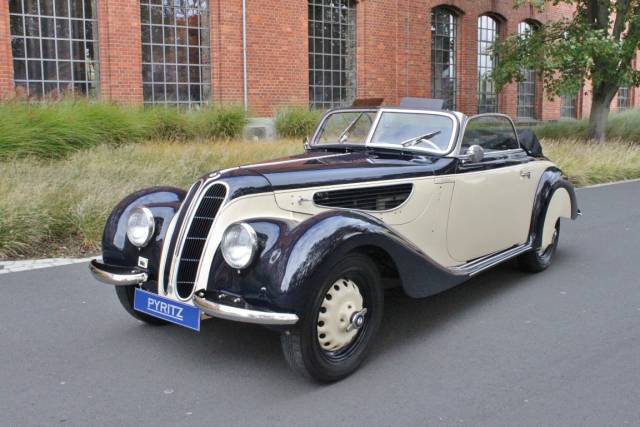BMW 327/28 Classic Cars for Sale
Produced between 1938 and 1940, the BMW 327/28 stands out as a streamlined touring sports car offered as both cabriolet and coupé. Its high-performance 80 hp six-cylinder engine, elegant bodywork from Ambi-Budd, and advanced technical features place the 327/28 among the most sought-after classic BMWs for enthusiasts and collectors today.
Suchergebnisse
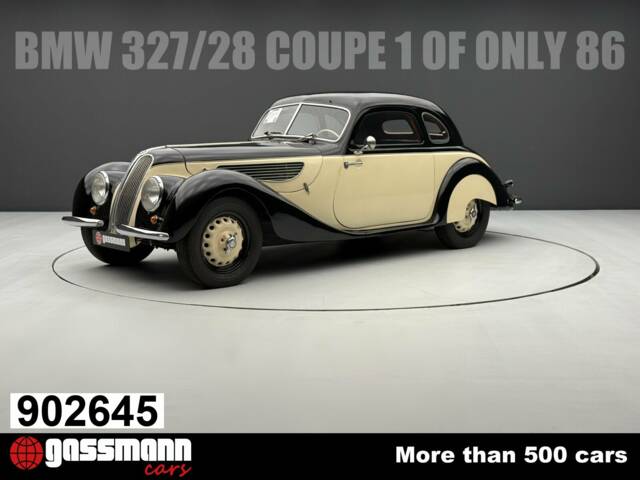
1938 | BMW 327/28
327/28 Coupé - 1 von nur 86 - mehrfach
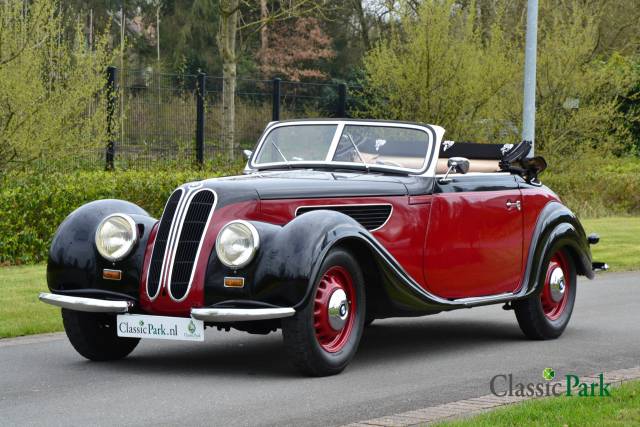
1949 | BMW 327/28
BMW 327 Sportkabriolett
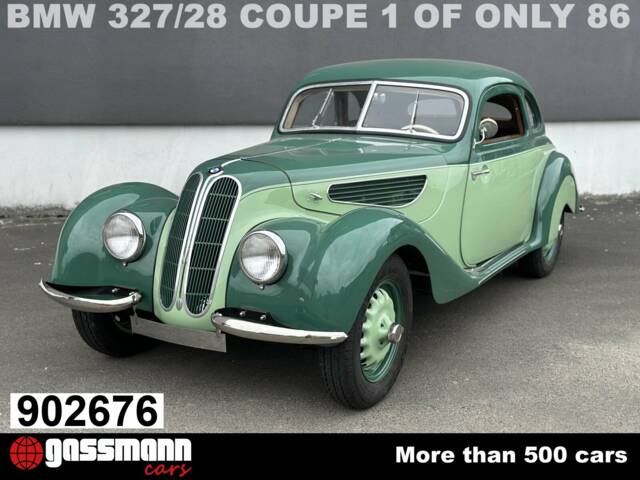
1939 | BMW 327/28
327/28 Coupé - 1 von nur 86 - mehrfach
BMW 327/28 listing references from Classic Trader
Below you will find listings related to your search that are no longer available on Classic Trader. Use this information to gain insight into availability, value trends, and current pricing for a "BMW 327/28" to make a more informed purchasing decision.
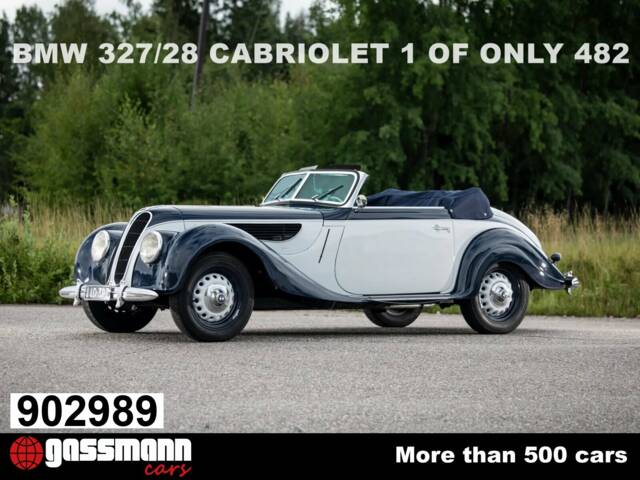
1939 | BMW 327/28
327/28 Sport Cabriolet, 1 von nur 482 Exemplaren
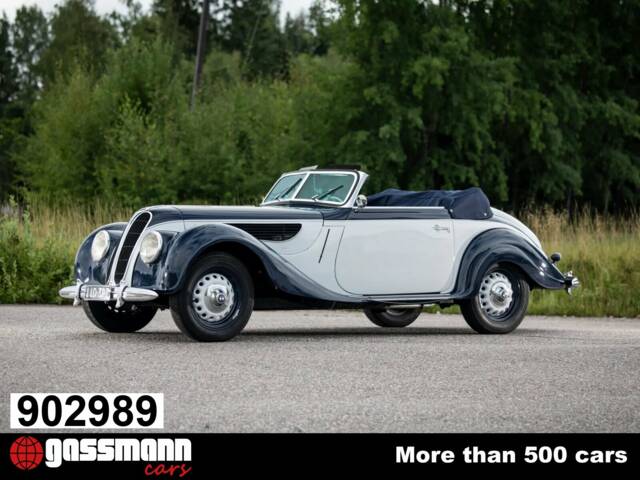
1939 | BMW 327/28
327/28 Sport Cabriolet
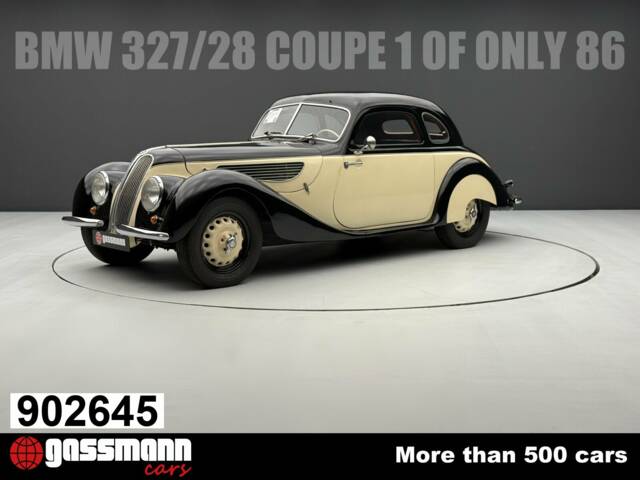
1938 | BMW 327/28
327/28 Coupé - 1 von nur 86
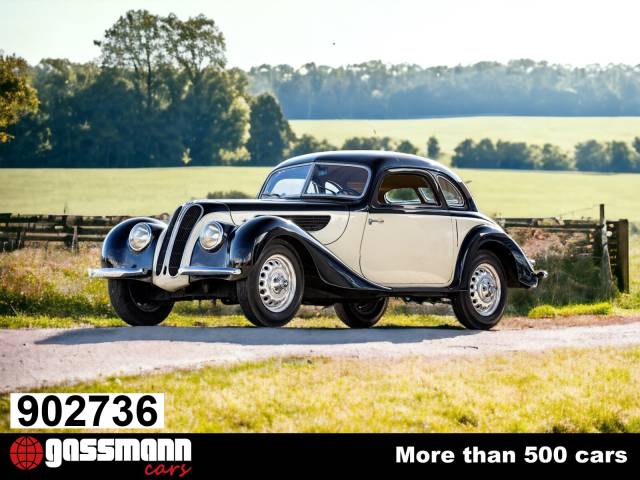
1939 | BMW 327/28
327/28 Coupé - 1 von nur 86, mehrfach
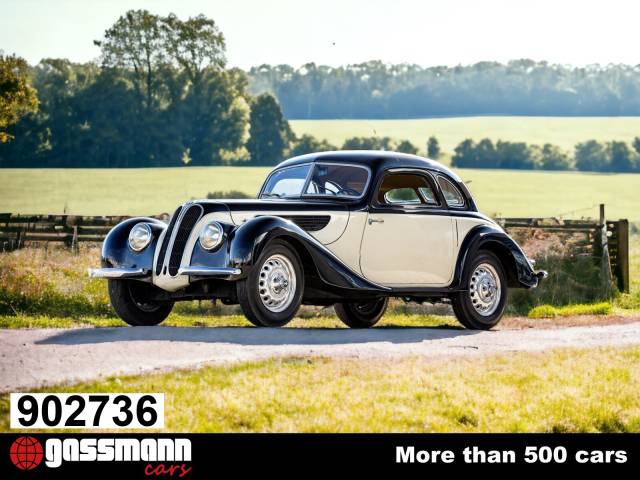
1939 | BMW 327/28
327/28 Coupé - 1 von nur 86

1939 | BMW 327/28
1939 BMW 327/28 Coupé
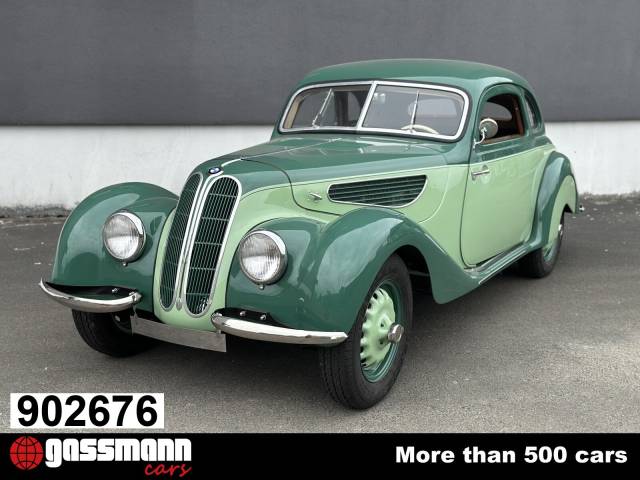
1939 | BMW 327/28
327/28 Coupé - 1 von nur 86
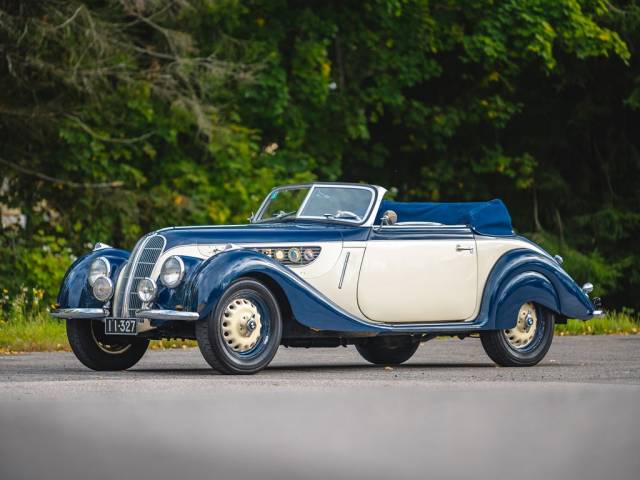
1938 | BMW 327/28
1938 BMW 327/28 Sport Cabriolet
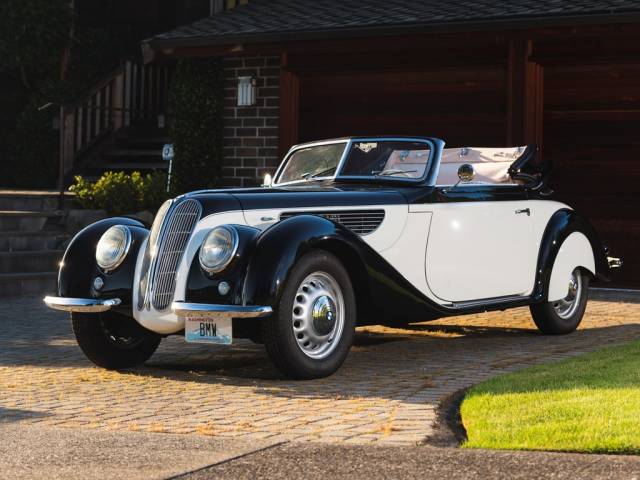
1938 | BMW 327/28
1938 BMW 327/28 Sport Cabriolet
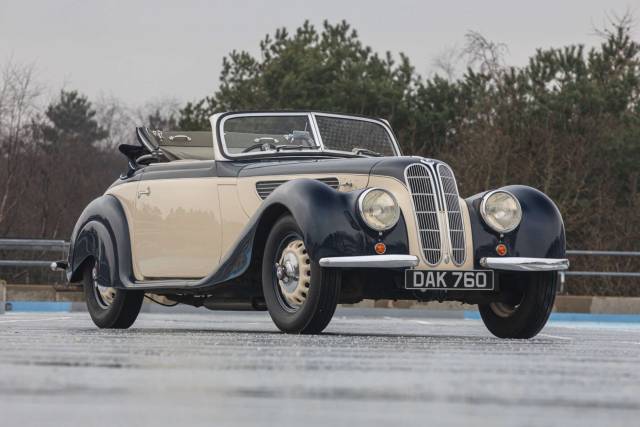
1939 | BMW 327/28
1939 Frazer Nash-BMW 327/80 Cabriolet
1939 | BMW 327/28
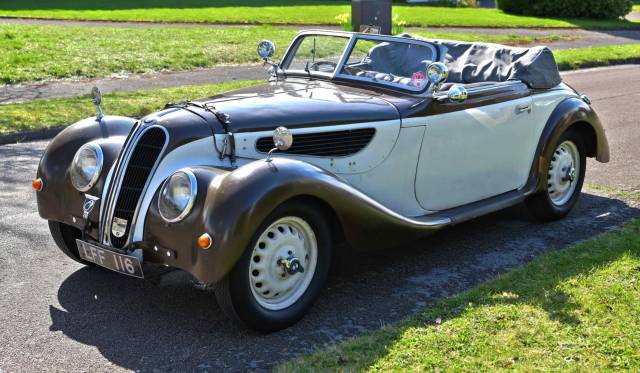
1938 | BMW 327/28
History of the BMW 327/28
The BMW 327/28 emerged as a sporting evolution derived from the BMW 327, continuing BMW’s push into exclusive sports cars in the late 1930s. First built at the Eisenach factory in 1937, the 327/28 shared a shortened box-frame chassis derived from the BMW 326, paired with streamlined bodywork produced by Ambi-Budd in Berlin. Distinctive chassis engineering – including a semi-monocoque structure, advanced centralised lubrication, and hydraulic brakes – set the car apart technologically. Available as cabriolet and coupé, the 327/28 featured body design in tune with the late 1930s’ progressive views on aerodynamics, with flowing lines and a divided windscreen lending it unmistakable character.
Following the outbreak of WWII, production shifted, and BMW’s Eisenach plant ultimately ended up in the Soviet-controlled zone, where similar post-war models continued under the EMW designation until the late 1940s. The 327/28 remains a milestone in pre-war German sports car design.
Model History
The 327/28 sits alongside the renowned BMW 328, using the 80 hp engine first seen in its racing sibling. While the standard BMW 327 delivered 55 hp with two carburettors, the 327/28 shares the triple Solex carburettor configuration with the 328, substantially boosting output and making for a more spirited drive. Production of the 327 series ran from 1937 to 1941, interrupted by the war, then briefly continued after 1945 under the EMW badge in Eisenach. Later, BMW’s luxury and sports heritage was picked up again with the 503 and 507 of the 1950s. Only 559 units of the 327/28 were built with the 80 hp engine, making it distinctly rarer compared to the base version.
Highlights of the BMW 327/28
The BMW 327/28 blends advanced 1930s engineering with elegant styling, rooted in its streamlined silhouette and modern technical concept. Innovations include hydraulic clutch and brakes, a central lubrication system, and a robust straight-six engine with an overhead valve layout. The cabriolet offers sporting elegance both open and closed, featuring high-grade leather interiors and the trademark central instrument cluster.
Various special-order features exist, including a glovebox clock with silver surround and oval side windows with wooden frames. Many models were delivered in striking two-tone paint combinations.
Technical Data
Special Editions and Collectible Models
Some right-hand drive examples were marketed as Frazer Nash BMWs in the UK, distinguished by unique details for British customers. Post-war EMW versions assembled under Soviet management in Eisenach stand apart due to their EMW badging and subtle technical amendments. Vehicles retaining matching numbers for engine and chassis, along with those in original specification or featuring rare accessories (such as original tools or special dashboard clocks), are especially valued among connoisseurs.
Weak Spots and Common Issues
Sourcing spare parts for the BMW 327/28 can present significant challenges – many components require bespoke reproduction. The original gearbox’s lack of synchromesh can hamper usability, though period-correct upgrades exist. Pay attention to the wooden frame beneath the steel body panels: rot or repairs can be complex and costly. Ensuring the central lubrication system functions correctly is vital for chassis longevity, and cars should be inspected for historical restoration work quality.
Engine, Performance, Transmission and Handling
The BMW 327/28’s 2.0-litre inline-six, derived directly from the celebrated 328, offers 80 horsepower and exceptional flexibility for its era. It achieves a top speed around 130–140 km/h and delivers robust touring performance suitable even for today’s traffic. Handling benefits from low-slung suspension and a semi-monocoque construction, providing surprising road comfort for a 1930s sports car. Some examples feature upgraded front brakes from later BMWs (“twin leading shoe”) for improved stopping power.
- BMW 327/28 Cabriolet: Combines open-air touring with high-spec powertrain; only 482 produced.
- BMW 327/28 Coupé: Even rarer, just 86 units built; desirable for closed-body elegance and structural rigidity.
Interior, Comfort, Exterior and Design
Ambi-Budd’s streamlined coupe and cabriolet bodies gave the 327/28 its defining aerodynamic aesthetic. The car is notable for its two-tone paintwork options (including black-red, beige-dark blue, or anthracite-green), divided windscreen, and partially concealed rear-mounted spare wheel. Interior trim uses quality leather for seats and doors, with elegant oval rear windows (sometimes with wooden frames) and a compact but stylish dashboard concentrated around a central instrument cluster. Accessories such as a wind-up clock in the glove compartment and original tool rolls add to the period charm. Even as a four-seater, the 327/28 manages to maintain an intimate, driver-focused cockpit.
Other Relevant Features
Several 327/28s feature rare period upgrades—such as synchronised gearboxes—bringing daily usability closer to modern standards without detracting from originality. Weight distribution and low kerb weight means even lengthy journeys are comfortable. The car’s semi-monocoque chassis construction set a precedent for later automotive engineering at BMW.
Summary
The BMW 327/28 stands as a testbed for pre-war German technological and design ambition: streamlined, luxurious, and mechanically sophisticated. Its rarity, especially among 80 hp models with matching numbers, underscores its unique status on the market. Balancing technical innovation with classical styling, the 327/28 appeals to collectors searching for a landmark in BMW’s heritage – a car ready for both concours events and demanding road tours.



